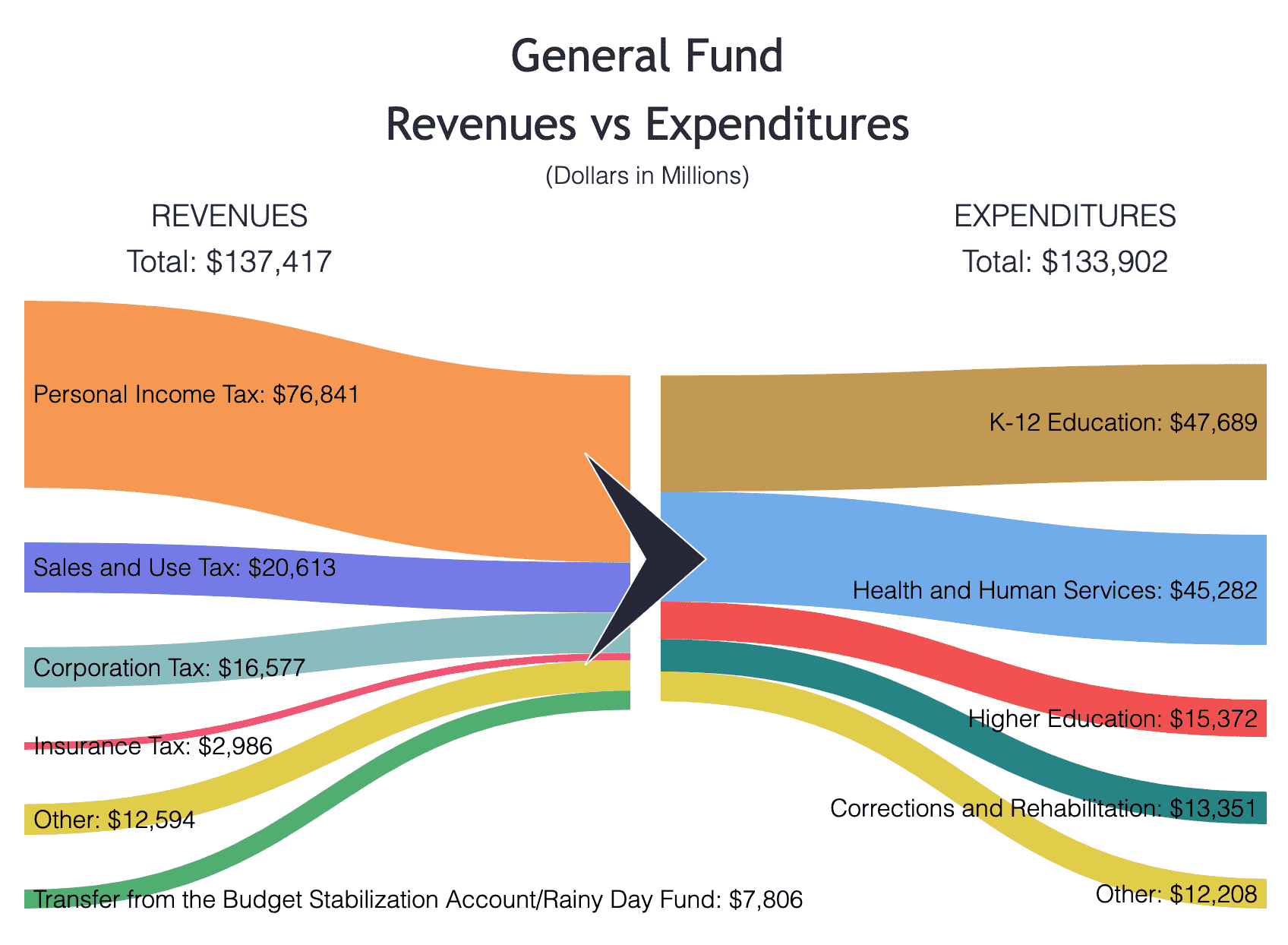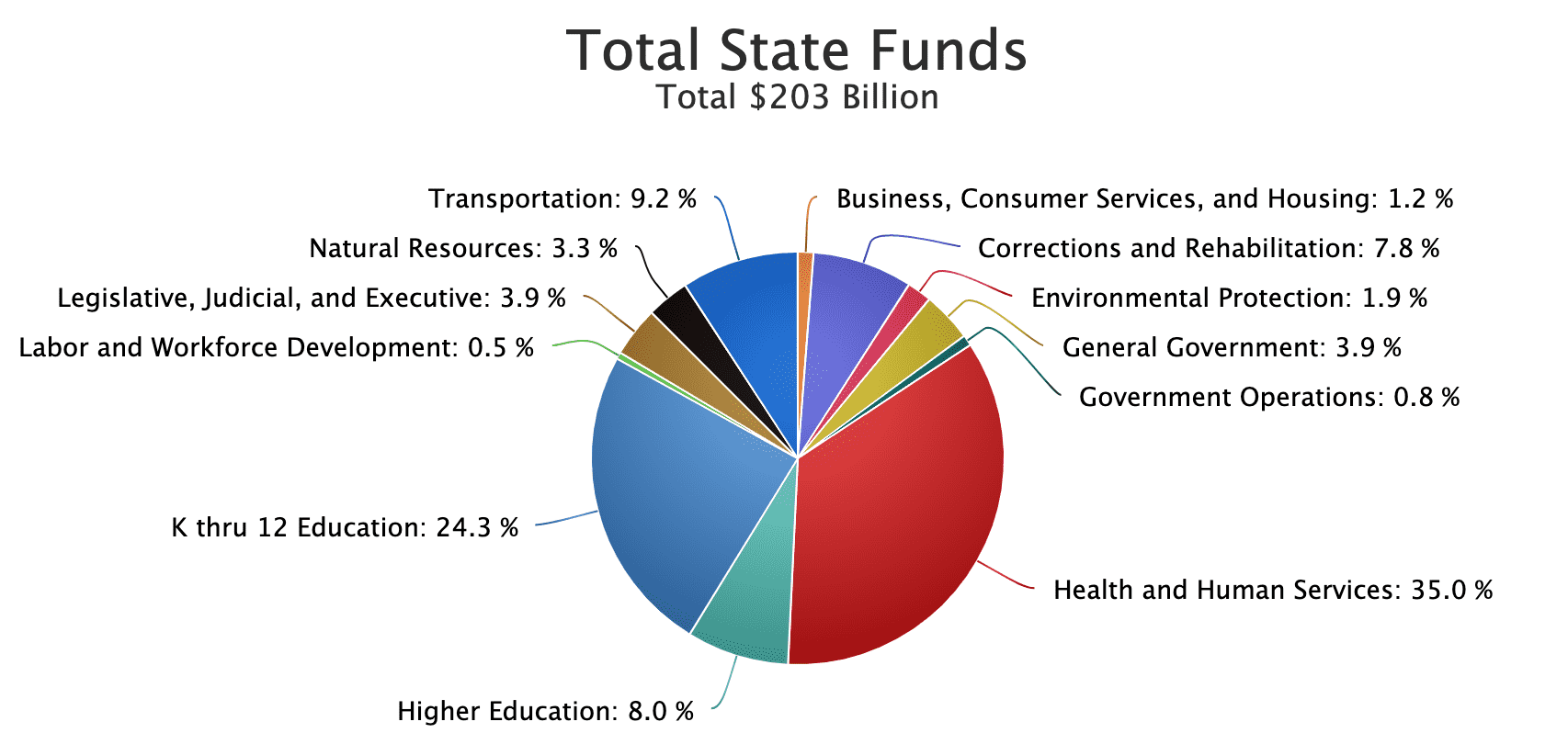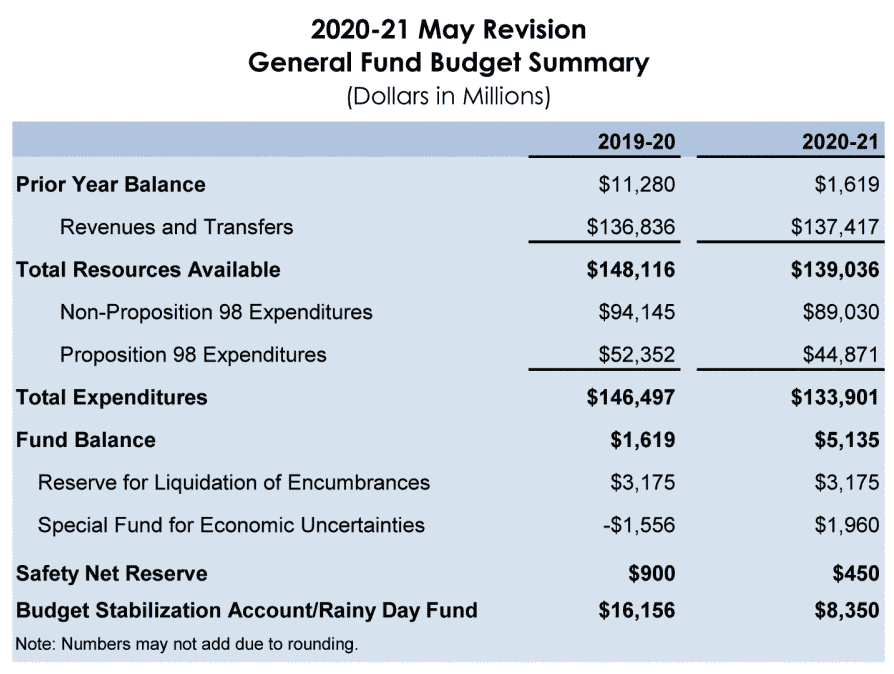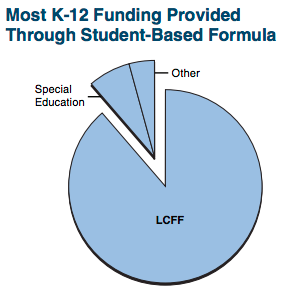How California Budgets for Education

We Squeezed the California Education Budget Process into One Short Blog Post!
Every year, California creates a budget for public education. How does that work, actually? Who creates and influences it, and when are the decisions made? How can you get involved and have an influence?
...and how does the pandemic change things?
The Basics
Let’s start with the basics: How much $$ does education get in the state budget?
In January, the governor of California proposes a budget for the state based on a forecast of the taxes the state will take in, and how the law directs that the funds should be used. In January of 2020 the outlook was pretty sunny, and the forecasts called for substantial growth.
As it became clear that the effect of the pandemic on tax receipts would be swift and severe, the state's budget forecasters were left to scratch their heads. California's constitution requires that the budget be balanced. Education’s minimum share of the money is determined by a formula known as Prop 98. The formula includes many factors, including how well the economy is doing, whether there are more or fewer kids in public school, and changes in the cost of living. Some say there are only about three people in the whole state who really understand how the formula works, but in the end the education budget ends up about 40% of the general fund.
The state rarely allocates any more to education than the minimum required by law. Good budget years are good for public education — and the reverse is also true. (For more see Ed100 Lesson 8.3).



How is the education share of the budget divided?
Most of the money for K-12 education goes directly to school districts based on the number and characteristics of students who show up to school. Those rules — collectively known as the Local Control Funding Formula (LCFF) — define how the pie is divvied up. Unless the pie grows larger, increasing the LCFF portion means taking money from the other small portion of that pie. It’s really a zero-sum thing.
 Source: LAO CalFacts card 34
Source: LAO CalFacts card 34
The Budget Process
Here is the big picture: There are hearings throughout the first half of the year that look at both the budget itself and at the budget impact of education bills. Each of these pathways is a little different. (The nonprofit California Budget & Policy Center does a great job of explaining the distinction between these two paths.)
By January 10, the Governor officially kicks off the budget process by proposing a budget with support from the state Department of Finance. Budget committees in the Senate and Assembly consider the Governor's proposed budget as a whole. Subcommittees in the Senate and Assembly separately examine the proposed budget for education. These hearings are open to the public. When agendas are set, you can find them online.
After the Governor releases the proposed budget, advocates react, shoring up support for the parts they favor and scrambling to make adjustments.
Want more detail? Here's an official flowchart
By May 14, the Governor releases a revised budget that reflects input and more up-to-date financial information. (You guessed it, it's called the May Revise). In normal times, this revision is based on early data about income tax receipts. In 2020, the federal tax deadline was delayed to June, so there will be less data to go on. The Governor's revision reflects a guess about what will happen in the economy and in tax receipts. Separately, the Budget Committees of the Senate and Assembly also each adopt their version of the budget. A conference committee irons out differences between these versions.
By June 15, the Senate and Assembly leaders huddle with the Governor to hash out the final details and pass a balanced budget by a majority vote of both houses. If the process gets stuck and they don't pass a budget on time, legislators are not paid, based on an initiative passed in 2010 after a series of budget delays.
On July 1, the state begins the new fiscal year. Between the passage of the budget by the legislature and July 1 the Governor may cut specific expenditures using line-item vetos. This is rare.
Education Policy Bills: A Parallel Process
At the same time as the main budget bills are in the works, the Senate Education and Assembly Education committees consider policy bills that affect education. Some policy bills approved by these committees involve money. If a bill requires significant money, it must survive passage through the Senate Appropriations or the Assembly Appropriations Committee. Many bills die in these committees because the cost is too high.
Want more? The California Budget & Policy Center has an excellent report on how the policy process and the budget process work together.
While the budget bill is adopted by July 1, education policy bills continue the legislative process through the summer. Similar to the federal process, after a bill passes one house, it must then go to the other for consideration. (The adopted budget may be revised a bit, with the Governor's approval, to include funding in these adopted bills.)
Legislation is often a multi year process. If a bill fails at first, it may have set the stage for further discussion of the issue the next year.
How You Can Get Involved
That’s why you are reading this, right? You want to know how you can get informed and have some say in the budget process.
Get Informed. Throughout the development of the budget, the Legislative Analyst's Office provides detailed information and analysis. You can sign up to be notified whenever there is a new report. Separately, the California Department of Finance offers information on the current Governor's budget, as well as budget information from past years.
As bills work their way through the legislative process, you can find information about them on the state's "Leg Info" page (it's pronounced "ledge info").
Support an organization's voice. Some education organizations take positions on bills under consideration, and may or may not make those positions public. For example, you can find current positions of the California State PTA online. Other vocal advocates include the California Charter Schools Association and the California Teachers Association.
Hear Carol's radio interview about how to be heard.
Participate in public comment. The legislative process includes opportunities for public comment. Agendas are posted online. The California Senate and the California Assembly provide live webcasts of legislative hearings. The Senate and Assembly committees have staff members who take their work seriously and may be able to help provide more information about legislation.
Meet with your legislator. Legislators welcome contact with their constituents; why not set up a meeting with the office of your legislator to discuss an issue you care about? Frequently, you will be directed to the staff person who is responsible for education issues.
Tags on this post
Budgets Policy PandemicAll Tags
A-G requirements Absences Accountability Accreditation Achievement gap Administrators After school Algebra API Arts Assessment At-risk students Attendance Beacon links Bilingual education Bonds Brain Brown Act Budgets Bullying Burbank Business Career Carol Dweck Categorical funds Certification CHAMP Change Character Education Chart Charter schools Civics Class size CMOs Collective bargaining College Common core Community schools Contest Continuous Improvement Cost of education Counselors Creativity Crossword CSBA CTA Dashboard Data Dialogue District boundaries Districts Diversity Drawing DREAM Act Dyslexia EACH Early childhood Economic growth EdPrezi EdSource EdTech Effort Election English learners Equity ESSA Ethnic studies Ethnic studies Evaluation rubric Expanded Learning Facilities Fake News Federal Federal policy Funding Gifted Graduation rates Grit Health Help Wanted History Home schools Homeless students Homework Hours of opportunity Humanities Independence Day Indignation Infrastructure Initiatives International Jargon Khan Academy Kindergarten LCAP LCFF Leaderboard Leadership Learning Litigation Lobbyists Local control Local funding Local governance Lottery Magnet schools Map Math Media Mental Health Mindfulness Mindset Myth Myths NAEP National comparisons NCLB Nutrition Pandemic Parcel taxes Parent Engagement Parent Leader Guide Parents peanut butter Pedagogy Pensions personalized Philanthropy PISA Planning Policy Politics population Poverty Preschool Prezi Private schools Prize Project-based learning Prop 13 Prop 98 Property taxes PTA Purpose of education puzzle Quality Race Rating Schools Reading Recruiting teachers Reform Research Retaining teachers Rigor School board School choice School Climate School Closures Science Serrano vs Priest Sex Ed Site Map Sleep Social-emotional learning Song Special ed Spending SPSA Standards Strike STRS Student motivation Student voice Success Suicide Summer Superintendent Suspensions Talent Teacher pay Teacher shortage Teachers Technology Technology in education Template Test scores Tests Time in school Time on task Trump Undocumented Unions Universal education Vaccination Values Vaping Video Volunteering Volunteers Vote Vouchers Winners Year in ReviewSharing is caring!
Password Reset
Search all lesson and blog content here.
Login with Email
We will send your Login Link to your email
address. Click on the link and you will be
logged into Ed100. No more passwords to
remember!















Questions & Comments
To comment or reply, please sign in .